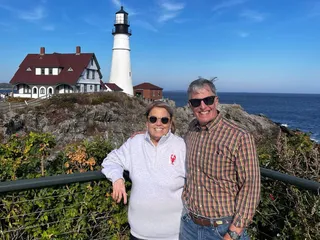The Enduring Legacy of A.L. Ueltschi
Contact Our Team
For more information about how Halldale can add value to your marketing and promotional campaigns or to discuss event exhibitor and sponsorship opportunities, contact our team to find out more
The Americas -
holly.foster@halldale.com
Rest of World -
jeremy@halldale.com

Long before FlightSafety International began, A.L. Ueltschi, the son of a Franklin County, Kentucky farmer, wanted to fly. His heroes were legendary pilots like Charles Lindbergh, Roscoe Turner and famous World War II air commander Jimmy Doolittle.
Ueltschi’s enthusiasm for airplanes and those that flew them never waned, as he described in The History & Future of Flight Safety, written by long-time aviation writer and editor William Garvey: “My ambitions were sealed in 1927, when Charles Lindbergh flew the Atlantic… My ear was glued to our vacuum-tube RCA radio, listening for every scratch-sounding news report on the progress of his flight. When the bulletin came announcing that he had landed in Paris and was carried off the field on the shoulders of thousands of cheering Frenchmen, I was hooked.”
Ueltchi’s drive and talent were seen early on. He soloed in an OX-5-powered Waco at 16. At 23, he was the chief pilot for Queen City Flying Service, a Cincinnati, Ohio-based flight training company.
In 1935, Ueltschi borrowed $3,500 against his business, Little Hawk burger stands, to buy a Waco 10 aircraft. Six years later, Pan American Airways hired Ueltschi, who later became airline founder Juan Tripp’s personal pilot.
The 71-year-old training company has a new leadership team and headquarters, read more on the changes to the house that Ueltschi built and Buffett bought.
In 1951, FlightSafety was incorporated and began operations out of the Marine Air Terminal at New York’s LaGuardia Airport. The company had one employee, Ueltschi.
Those who knew and worked with him described Ueltschi as a hard-charging visionary with a colorful vocabulary. His business skills, too, were noteworthy. Annual revenues in 1970 were $9 million. Six years later, they rose to $43 million. By 1986, revenues had exceeded $110 million.
FSI’s business improved significantly with the arrival of the business jet that would replace the propeller-driving aircraft like the Beechcraft 18s, Douglas DC3s and Convairs, which were the executive jet fleet of the time.
These jet aircraft were fast, pricey and technologically advanced. Using FSI’s advanced simulators and training solutions to provide initial and transition training for pilots would boost FSI revenues and add a whole new dimension to its business.
Ueltschi and his management team convinced insurance companies that they would assume a huge financial risk by insisting that pilots train in the actual airplanes. Getting the insurance companies on board helped the company’s fortunes.
By 1996, FSI operated more than 100 simulators for 50-plus types of aircraft at 36 Learning Centers worldwide. In 2001, FSI celebrated its 50th anniversary and Ueltschi was enshrined in the National Aviation Hall of Fame.


